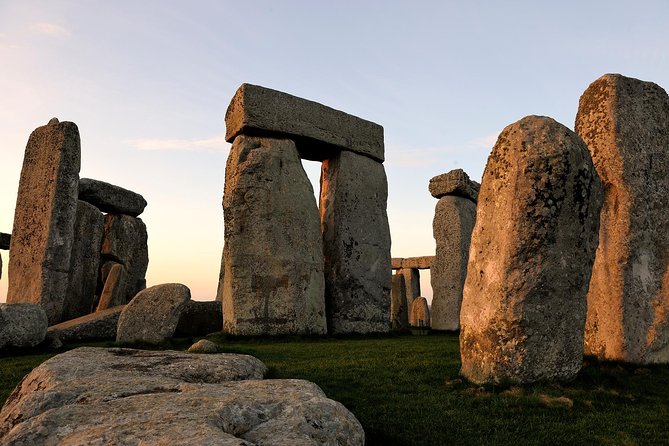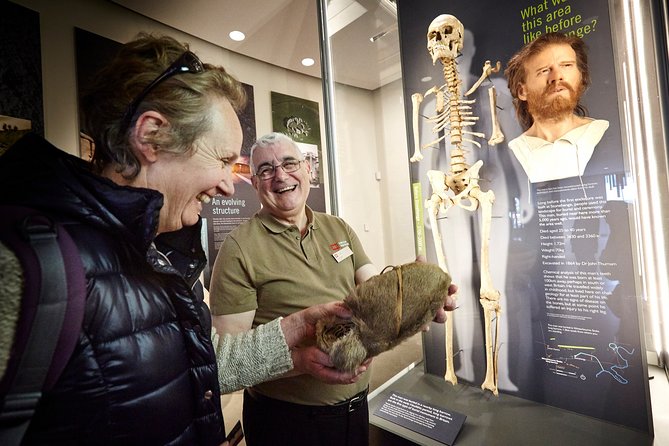- Home
- Discover London
- Windsor Castle, Stonehenge, And Oxford Day Trip From London
Windsor Castle, Stonehenge, And Oxford Day Trip From London
Description
More about Stonehenge
Planning a visit to Stonehenge? This iconic prehistoric monument in Wiltshire, England, is a must-see for history buffs and curious travelers alike. Standing proud for over 4,500 years, Stonehenge continues to captivate visitors with its enigmatic presence and rich archaeological significance.
Why Visit Stonehenge?
• Witness a UNESCO World Heritage Site
• Explore one of the world's most famous prehistoric monuments
• Unravel the mysteries of ancient British culture
• Experience the magical atmosphere of the Salisbury Plain
Getting There:
Located about 90 miles southwest of London, Stonehenge is easily accessible by car or public transport. The nearest train station is Salisbury, from where you can catch a shuttle bus to the site. Check English Heritage's travel guide for detailed directions.
Best Time to Visit:
Stonehenge is open year-round, but the site is particularly magical during the summer and winter solstices. Early mornings or late afternoons offer the best light for photography and a less crowded experience.
What to Expect:
As you approach the stone circle, you'll be struck by its sheer size and the precision of its construction. The visitor center provides fascinating insights into Neolithic life and the theories surrounding Stonehenge's purpose. Don't miss the reconstructed Neolithic houses, which offer a glimpse into prehistoric living conditions.
Insider Tips:
• Book tickets in advance to avoid disappointment, especially during peak season
• Use the free audio guide for in-depth information about the site
• Dress warmly and wear comfortable shoes – the Salisbury Plain can be windy and the ground uneven
• Consider a guided tour for a more immersive experience
Beyond Stonehenge:
Extend your visit by exploring nearby attractions:
• Avebury Stone Circle: A larger, more accessible Neolithic site
• Salisbury Cathedral: Home to one of the four surviving original copies of the Magna Carta
• Old Sarum: The site of the earliest settlement of Salisbury
Conservation Efforts:
Stonehenge faces ongoing conservation challenges. Learn about English Heritage's preservation work and how you can contribute to protecting this ancient wonder.
FAQs:
Q: Can I touch the stones?
A: For conservation reasons, visitors can't enter the stone circle during normal opening hours. However, special access visits are available outside regular hours.
Q: How long should I plan for my visit?
A: Allow at least two hours to explore the site and visitor center thoroughly.
Q: Is Stonehenge accessible for visitors with disabilities?
A: Yes, the site offers accessible parking, mobility vehicle service, and wheelchair access to key areas.
As the sun sets over the ancient megaliths, casting long shadows across the Salisbury Plain, you'll understand why Stonehenge has captivated imaginations for millennia. This isn't just a pile of rocks – it's a window into our ancestors' world, a testament to human ingenuity, and a reminder of the enduring mysteries of our past. Whether you're a history enthusiast, a spiritual seeker, or simply curious about the world's wonders, Stonehenge offers an unforgettable journey through time.
What's Included
- Superior Coach incl. Wifi & USB charging on board
- Expert guide
- Walking Tour of Oxford
- Entrance ticket to Windsor Castle interior (if option selected)
- Personal Audio Headset
- Stonehenge entry (if option selected)
Additional Info
- Wheelchair accessible
- Infants and small children can ride in a pram or stroller
- Public transportation options are available nearby
- Infants are required to sit on an adult’s lap
- Travelers should have at least a moderate level of physical fitness
- Please note that St George’s Chapel is open for visitors on Monday, Thursday, Friday and Saturday and is closed on Sunday (if option selected)
- Please note: Windsor Castle is closed on Tuesdays and Wednesdays
- Please note: the tour itinerary and order may change
- WINDSOR CASTLE IMAGES: Royal Collection Trust / © HM King Charles III 2023
- Both entry options include entry to Windsor Castle and Stonehenge.
- For a wheelchair user : Please contact us (by email or by phone) at least seven days before travel so we can make sure to arrange a suitable vehicle".
















